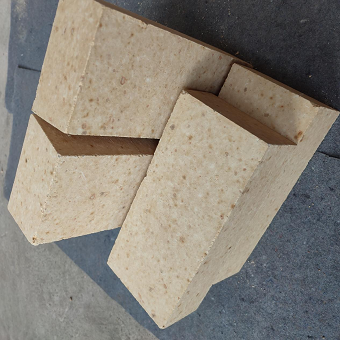How are high alumina bricks produced?
Apr 12, 2022
Before the raw materials of high alumina bricks are broken, the clinker blocks should be strictly classified, and the granular materials should also be classified and stored. Then check the high-pressure molding products of abrasive tools, and sinter different types of high-alumina bricks.
The most important thing in the production of high-alumina bricks is that the bauxite clinker should be graded when used. When the clinker is mixed and used, unevenness and expansion will occur, making it difficult to sinter high-alumina bricks, and it is difficult to achieve high-alumina high-alumina with qualified physical and chemical indicators external dimensions brick.
When determining the particle composition of high alumina bricks, in addition to considering factors such as dense accumulation, which is conducive to the sintering of products during molding and firing, the expansion coefficient caused by the secondary mullite reaction must be considered. If the sintered product is not well controlled, it will cause the expansion of the ruler, which will affect the use.

High alumina bricks, like other refractory materials, use coarse, medium, and fine three-level ingredients and the three-level ingredients should conform to the basic principle of "large at both ends and small in the middle". From the point of view of sintering, the less fine powder content, the more difficult the product is to sinter.
Properly increasing the size of the coarse clinker particles in the production of high alumina bricks will reduce the porosity of the product and increase the softening temperature under load, thermal shock resistance, and strength. For bauxite clinker with a rough structure, the critical particle size should not be too large.
When the structure is uniform and dense, and the impurity Fe content is high, the green body is easy to be sintered, and the safe firing temperature range is narrow, which is easy to cause over-burning or under-burning of the product. When using grade I bauxite clinker to make bricks, the main problem in the firing process is the expansion and loosening effect caused by secondary mulliteization, which makes the green body difficult to sinter, so the firing temperature is high.
The firing temperature of the first-grade high-alumina brick is 1430-1450℃, and the second-grade high-alumina brick is 1390-1420℃. When firing in a tunnel kiln, it is better to use a weak oxidizing flame in the high-temperature stage.
In short, to produce high-quality high-alumina bricks, the raw materials must be clean, high-pressure forming, and high-temperature sintering.
Relevant information
-

Main properties of magnesium oxide refractory
Performance characteristics of magnesia refractories and other basic refractories Performance characteristics of magnesia refractories and other basic refractories Refractories containing more than 80% ... -

What properties of lightweight insulation fire clay bricks can be improved by the addition of kyanite?
Lightweight insulation fire clay bricks are a kind of shaped refractory material with clay as the main raw material, which is processed, shaped, dried, and calcined with clay. on the kiln. Due to the r ... -

How is the effect of white fused alumina abrasive used in refractory materials?
After mixing, forming, drying, and firing at high temperature in a shuttle kiln. The product has the characteristics of high refractoriness, good thermal shock stability of white corundum, high high te ... -

Characteristics of refractory magnesia chrome bricks for lime kiln
Lime kilns are mainly classified into square kilns and circular kilns. According to the classification of fired products, they can be divided into lime kilns, ceramic kilns, cement kilns, glass kilns, ...

